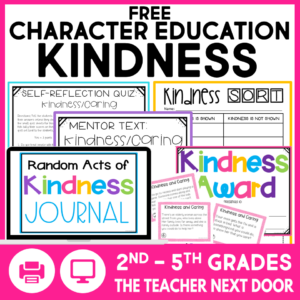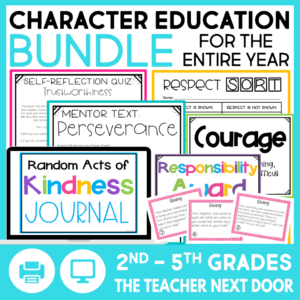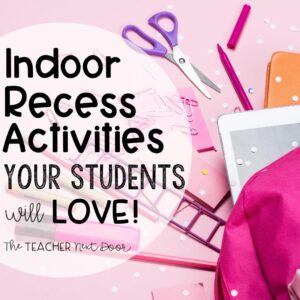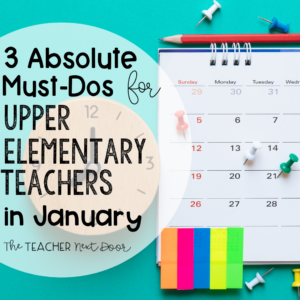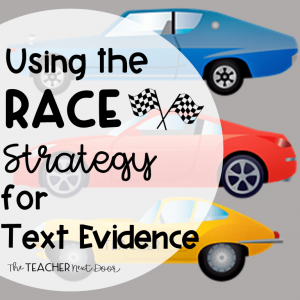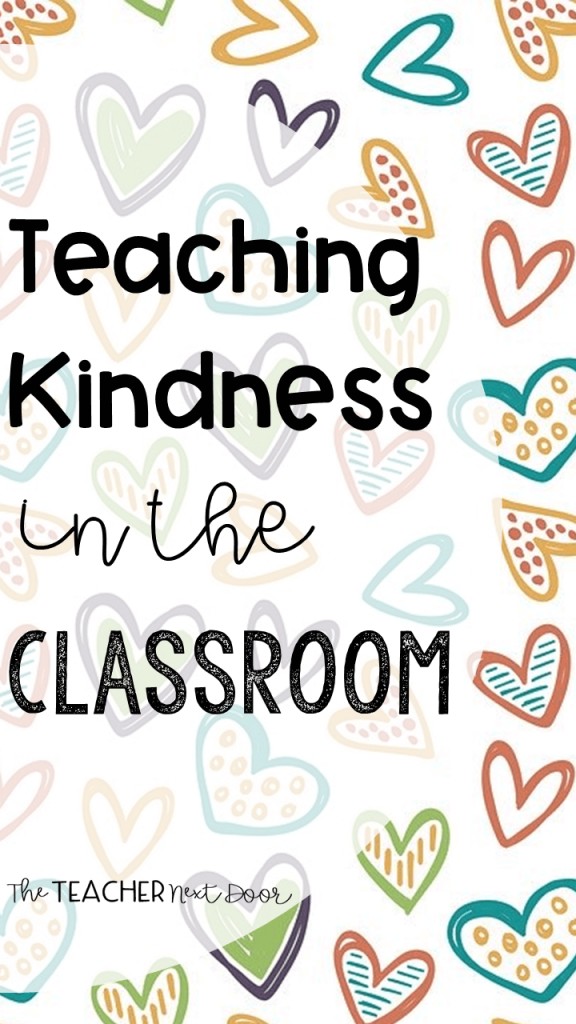
It’s clear…just turn on the news and you realize that kindness is needed more than ever. Some may say that kindness should be taught at home, and as teachers, many of us would agree.
The truth is though, that some children do not come from homes that are filled with kindness. Other homes may be well-meaning, but when parents are doing their best just to keep the family afloat, lack of time and energy can get in the way.
As teachers, more and more we see the need to include character education as part of the curriculum. When we teach attributes like kindness, we have a real opportunity to influence children’s lives for the better.
So, how exactly can you teach kindness in your classroom? Here’s what I do:
1. Model Kindness
The truth is that if I plan to teach about kindness, I better be a kind person myself! We all know that children are watchers…and copiers, whether we like it or not! When students see that we treat others kindly, they are more likely to copy that behavior as well.
Teachers who show kindness make a huge difference in a number of ways! According to Adena Klem and James Connell, students who perceive a teacher as caring have higher attendance and better grades and are more engaged in the classroom and at school. Lots of benefits as a result of caring teachers!
2. Use Mentor Texts
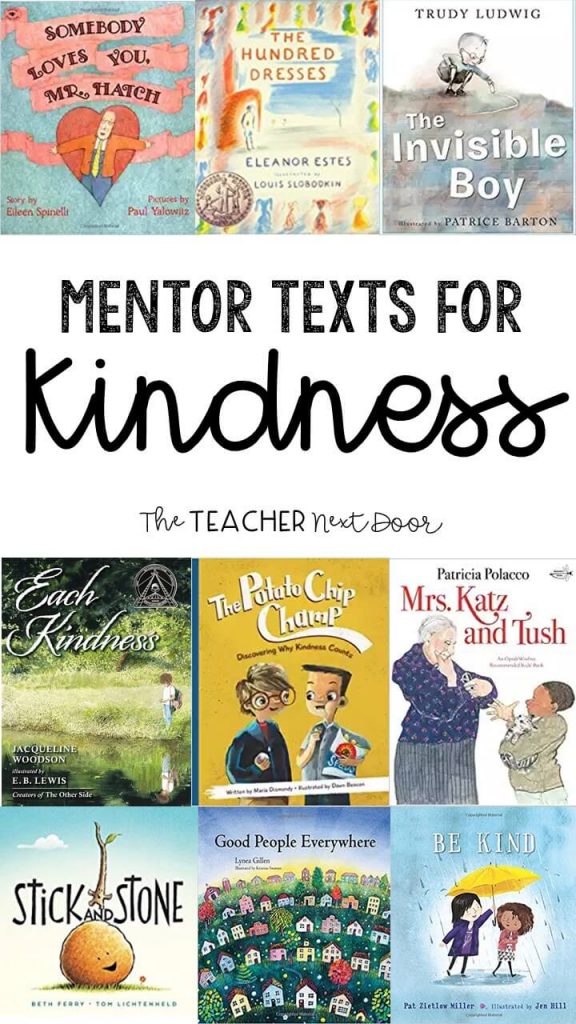
Mentor texts are wonderful tools for so many concepts in the classroom! I really like to use them during morning meetings for our character trait of the month, to serve as a springboard to a classroom discussion. For our Kindness Month, I carefully choose books that are interesting and have either examples or non-examples of kindness within their pages.
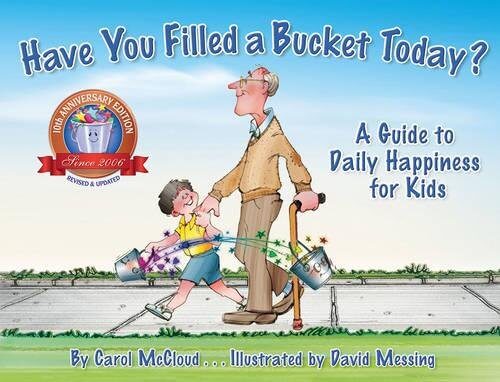
There are so many books about kindness. One of the books which is especially good for younger students is called How Full is Your Bucket? by Carol McCloud. This book talks about how our actions can fill someone’s bucket (make them happy) or can dip into their bucket (make them sad).
It’s great to brainstorm an anchor chart list of ways to be Bucket Fillers and Bucket Dippers. I also put a small bucket on one of my classroom walls as a reminder of this concept. This bucket hangs on my classroom wall to remind kids of the kindness concepts we discussed.
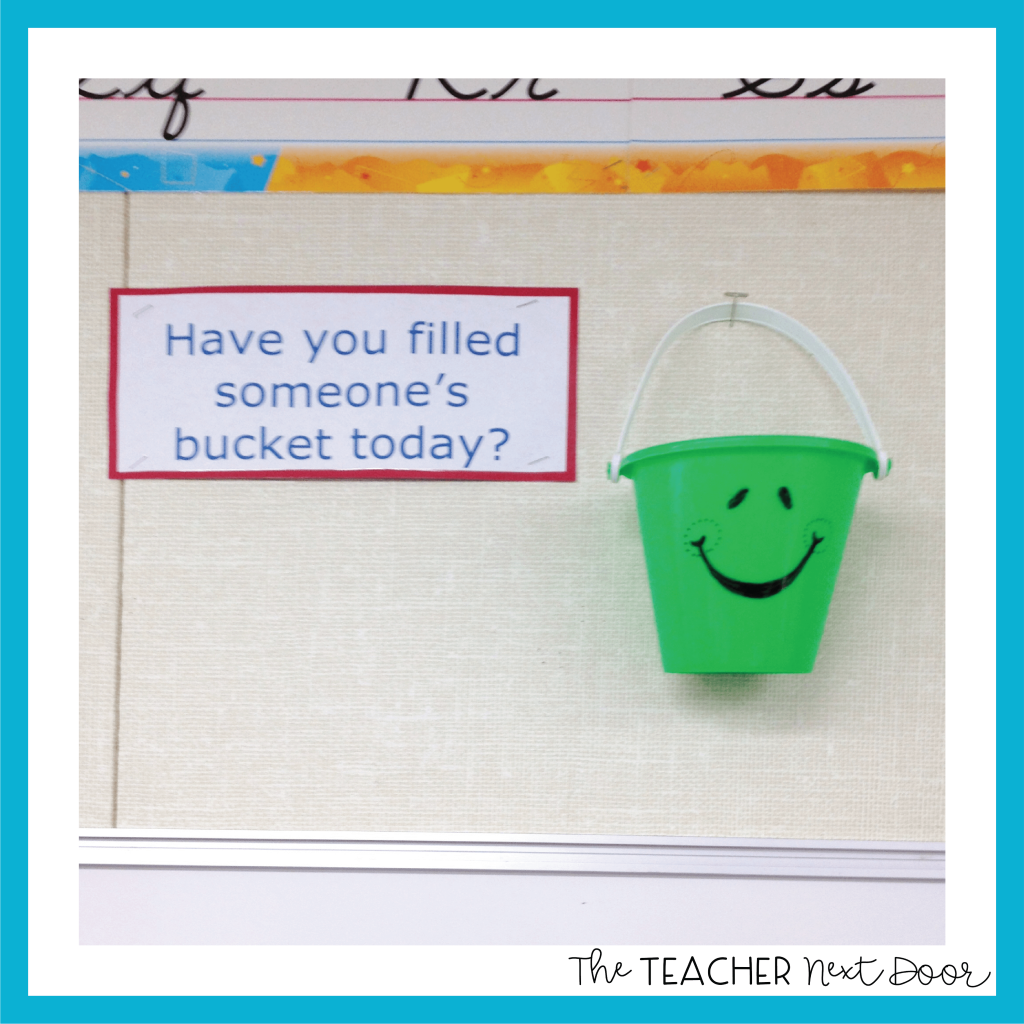
I think my all-time favorite though is Somebody Loves You, Mr. Hatch by Eileen Spinelli. I have read this over and over for, I don’t know how many years and still get choked up each time I read it.
There’s also an online version of it if you can’t find the book in your school library. If you haven’t tried this one yet, I highly recommend it!
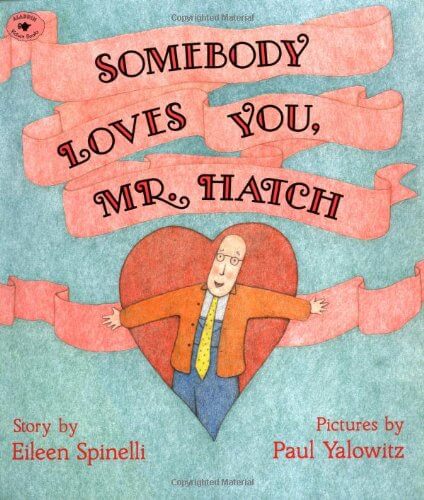
3. Random Acts of Kindness
February 17th is the official Random Acts of Kindness Day but of course, random acts of kindness are beneficial any day of the year! Whether you encourage your students to do Random Acts of Kindness for a day, a week, or a month, this activity can be a powerful one! Kids find out how satisfying it is to show caring towards others. It’s really a self-motivating activity!
The Random Acts of Kindness Foundation has lots of ideas for lessons, videos, and more kindness ideas on their website.
4. Shout Outs
One thing that really promotes a positive (and kind) classroom atmosphere is to do shout outs! I like to do shout outs for the first month or so, just noticing and celebrating something positive someone has done in the classroom. I might say, I’d like to give a shout out to _____ for organizing the library when her work was done. Or, I want to give a big shout out to _____ for making sure everybody was included in the capture the flag game at recess.
After you’ve done several weeks of shout outs and feel that the students are ready to participate as well, simply teach them how to do a shout out (compliment someone on his/her actions, not outward appearance…try to give shout outs to different classmates, not the same ones each time), and when to do a shout out (when the teacher says it’s Shout Out Time…usually right before lunchtime or the last 3 – 5 minutes of the day).
As shout outs become part of the language and the culture of the classroom, students are able to show kindness to each other and to spread positive feelings using this activity.
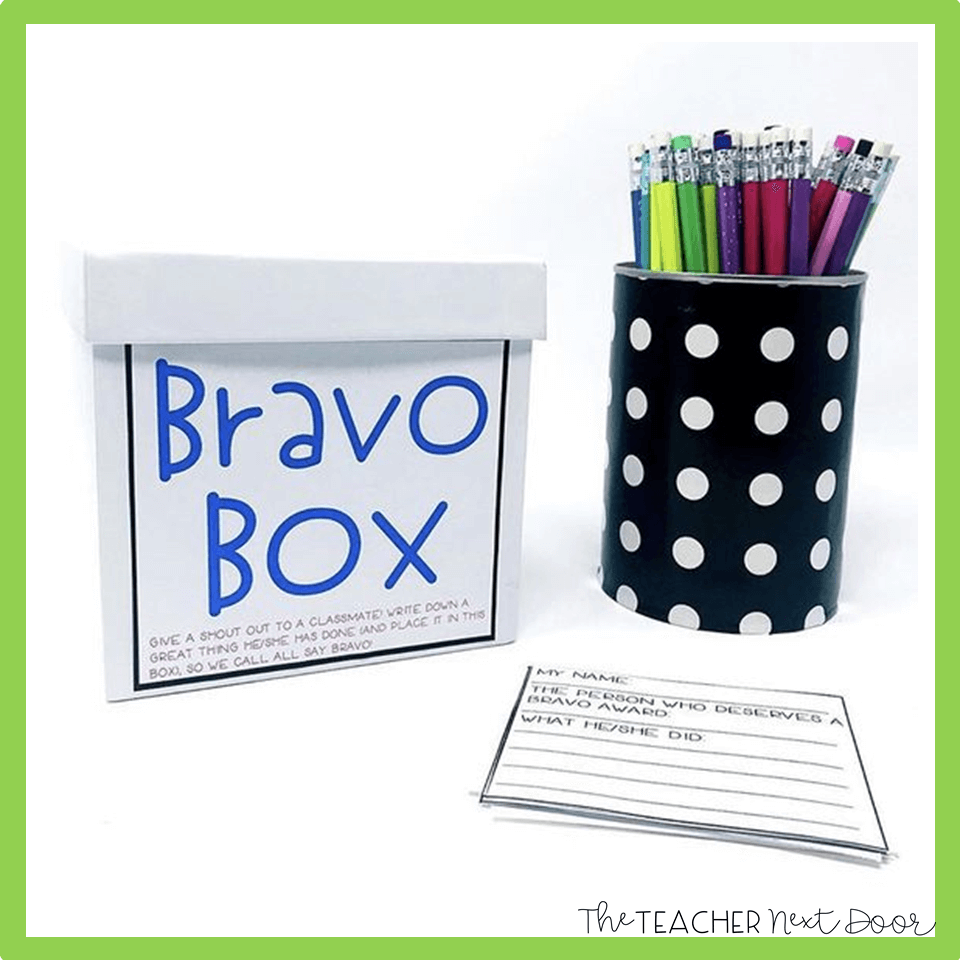
5. Bravo Box
Another way to spread kindness in the classroom is to do a Bravo Box. Simply place a box or basket with small sheets of paper near it. Students (and the teacher or para) may write short notes telling something they noticed that they appreciated. It could be an act of kindness, helpfulness, fairness, etc.
Again, students will need to know what the expectations are for this activity in order for it to be successful. At the end of the week, the teacher pulls any papers out of the box and reads them to the class.
6. Service Projects
Service projects are one of my favorite activities that we do each year. I am really big on getting kids excited to look outside of themselves to find a need and then to act to fill that need. One of the ongoing projects that we always do is to save pop tabs for the Ronald McDonald House. We collect them from the entire school every few weeks.
Besides pop tabs, each year my class votes on our own service project. We have made a quilt and raised money for pandas, through the World Wildlife Fund. We have collected toiletries for the homeless shelter. We’ve collected canned goods for the food bank too.
The idea is to have students take action to show kindness in a tangible way. It’s not enough to feel kindness, we have to show kindness in the things that we do. Service projects are a structured, easy way for kids to get involved and work as a team to make a difference in the community or the world.
Teaching kindness both by modeling it and through direct lessons or activities is important to me as a teacher. I realize time is short in the classroom and there are testing pressures and a million demands on us. I still think though that the time we put into teaching character traits like kindness will come back to us tenfold.
The Random Acts of Kindness Foundation research found that “…teaching social and emotional skills like kindness improves behavior and academic success.” I truly believe that.
If you’d like to try a FREE print and digital Kindness Unit with discussion task cards, a self-reflection quiz, a mentor text list, kindness activities page, a Random Acts of Kindness Journal, a character trait poster, kindness awards, and detailed teacher notes, click here:
If you’d like to take a look at the very complete print and digital Character Education Unit, which has enough materials to help you teach Character Education for the entire year, click here:
To read more about how I incorporate character education in the classroom, here’s a post I wrote that you might like: Incorporating Character Education in the Classroom
Thanks so much for stopping by!


